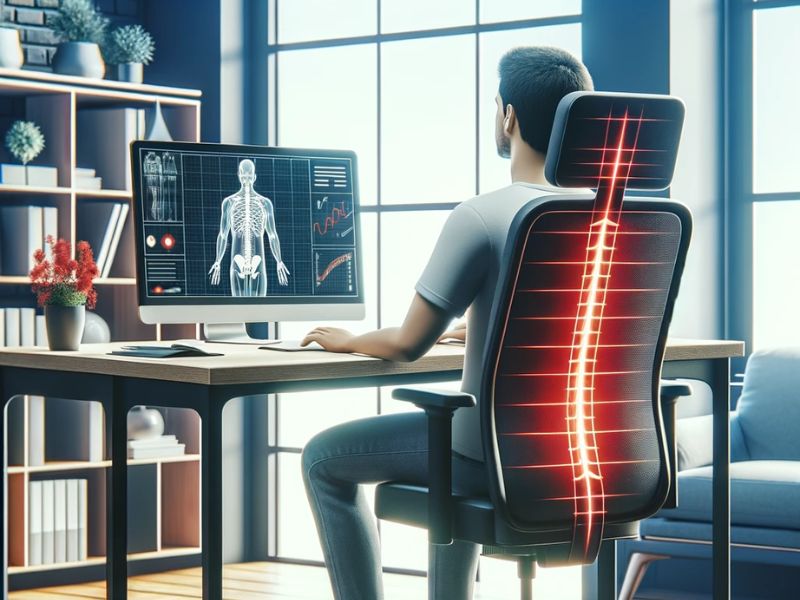
Back Pain and Office Work
Strategies for Prevention and Management
The Impact of Office Work on Back Pain
Back pain is one of the most common complaints among office workers, primarily stemming from long hours spent sitting in a static posture. This situation is exacerbated by non-ergonomic workstations, which can lead to muscle tension and spinal problems. Office workers often overlook the importance of proper posture, leading to muscular imbalances and tensions that can radiate from the neck to the lower back. An ergonomically arranged desk, taking into account monitor height, chair position, and keyboard and mouse layout, is crucial for preventing these issues.
Recognizing Risk Factors and Symptoms
Back pain can manifest with symptoms such as stiffness, radiating leg pain, and a persistent sense of fatigue that doesn’t improve with rest. Risk factors like sedentary behavior, poor posture, and the use of non-ergonomic chairs can contribute to these problems. It’s essential to promptly recognize these symptoms to prevent the situation from worsening. Adopting healthy habits, such as taking regular breaks to move and stretch, is crucial for preventing and managing back pain.
Prevention and Intervention Strategies
Preventing back pain in the workplace requires a comprehensive approach that includes adopting proper posture, using ergonomic furniture, and creating a work environment that promotes movement and flexibility. Specific exercises such as regular stretching, strength training to strengthen core muscles, and the adoption of relaxation techniques can play a key role in preventing and reducing back pain. The importance of techniques like micro-breaks, where workers take short breaks every hour to move and stretch, cannot be overstated.
When to Seek Medical Help
If back pain persists or worsens despite ergonomic changes and regular breaks, it’s important to consult a healthcare professional. A physiotherapist can provide customized exercises, posture-improvement advice, and specific treatments to reduce pain. In some cases, more specific interventions may be necessary, such as manual therapy, acupuncture, or chiropractic care, especially if back pain is chronic or particularly debilitating.


